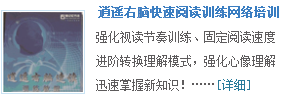其实英语听力中的材料很多都是以现实中的事件为原型进行材料加工的,所以总的来说在英语听力中材料的选择上总是围绕着几个知识点。所以今天我们就根据一些具体的试题来具体分析英语听力试题。
1.地点与方向
地点类题目是听力考试中最容易得分的题目类型之一,和身份、地位类题目的做法一样,地点类题目的入手点依然是关键词。
例1:
W:I need book of stamps(邮票)I’d also like to send this package first class.
M:Here are you stamps,but you have to take the package to the next window.
Question:Where does this conversation most probably take place?
A.In the restaurant
B.At the railway station
C.In the post office
D.At the airport
例题中关键词是stamp(邮票),所以可以判断在邮局。这样看来,不论出题还是做题,关键词都很重要,所以近年来关键词的难度有所增加。对付课本中没有出现过的词,最好的方法就是平时的积累和注意这些词汇应用的场合,收集相关的场景词,例如“学校”:register(注册)、dorm(宿舍)、department(系)、campus(校园)、playground(操场)、dining-room(餐厅)、clinic(校医院)、swimming-pool(游泳池)等等,你还应该了解一些课程名称。
现在的听力考试还流行考方向类的题目,做这类题目的有个诀窍,就是边听边在稿纸上画些草图,帮助理解,最最重要的还是细心。
2.职业与身份
首先,应该看选项,如果看到如teacher and student(老师和学生),father and son(父亲和儿子),即可以判断是身份地位类题目。下一步就是要听关键词,抓住几个有代表性的,不必将句子全部听完,即可答题了。
例1:
W:You were absent from class yesterday,Tom.
M:I couldn’t come,Mrs.Hart.I hurt my foot and my mother took me to the doctor’s.
Question:What is the probable relationship between the two speakers?
A.Doctor and patient
B.Mother and son
C.Teacher and student
D.Classmates
这道题的关键词是class,所以不会是A选项,前者又称后者是Mrs.Hart,所以也不会是B和D选项,故选C。此外,在做题的同时还要听出说话者的语气、语调,从而准确判断出两者的关系。如两个学生之间的谈话内容无外乎是和他们相关的学生生活、学习内容、学习情况等等。我们可以根据谈话双方的谈话内容的关键词进行答题。现在比较常考的场景词一般是医院、餐厅等,平时应注意这类词汇的积累。
3. 否定关系
做否定关系这类的题目,只需要听出否定词就可以判断句子是肯是否。
英语中的否定意义并非都是通过我们熟知的no,not,never等进行表达,很多情况下都是通过许多词、短语、句型等手段以肯定的形式表达出来,具体有以下几种形式:(1)含有否定意义的副词和形容词,如:no(不),not(不),never(从来不),hardly(几乎不),rarely(很少),few(没几个),seldom(很少),scarcely(极少);(2)含有否定意义的词缀,如:un-unhappy(不高兴),im-impossible(不可能),in-inactive(不活动的),ir-irregular(不规则的),dis-disagree(不同意),non-nonfat(脱脂的),-less-careless(不细心的);(3)含有否定意义的动词、动词词组、介词、介词词组,如:fair(不成功),miss(未打中),avoid(避免),deny(否认),doubt(怀疑),anything but(除了),instead of(而不是),in no case(决不),under no circumstance(无论如何都不),run out of(缺乏);(4)另外还有一些结构也是含有否定意义的,如:too…to(太…以至于不能…),last+名词+动词不定式或者从句(决不会);(5)双重否定,即一句中出现两次否定形式,这也是最爱考的。
例1:
W:It’s much better to wait until tomorrow to go.Don’t you agree?
M:Yes.I couldn’t agree more.
Question:What did the woman mean?
A.She doesn’t agree with the man
B.She think that it is better to wait
C. She think that it is better to drive at night
D.She doesn’t think that the man made a wise decision
从表面上看,I couldn’t agree more这句话是否定句,可是翻译成汉语却是“我同意地不能再同意了”,其实也就是“我非常同意”的意思,这里的秘密就在于more;如果将其改为I couldn’t agree more,则翻译为“我坚决不同意”。
4. 转折与让步
表示转折与让步的词有instead,but,though,although,even though,if,despite,even so,in spite of,contrary to,但使用频率最高的还是but和although。由疑问词+ever也可以引导让步状语,汉语翻译成不论、不管的意思。
5. 比较与选择
比较与选择这类题目,也是出题的一个热点。
例1:
W:Who’s the best swimmer in your class?
M:Tom swims very well,and John’s surely excellent in swimming.
Question:Who swims best in the class?
A.John
B.Tom
C.Nobody
D.The whole class
因为excellent=best,所以此题答案是A。表示最高级除了用副词和形容词的最高级形式之外,还可以用excellent和perfect,因为这两个词本身就含有最高级的意思。另外,“比较级+than+any other”或“nothing(nobody,no one)+谓语+比较级+than”也有最高级和含义。
例2:
W:Sally has many hobbies,doesn’t she?
M:Actuall,Sally likes nothing better than to talk on the telephone with her friends.
Question:What does Sally like to do most?
A.Sally likes best to make phone calls
B.Sally likes best to talk with her friends most
C.Sally likes best to visit her friends most
D.Sally likes best to travel with her friends
此题中,woman所说的话在形式上是比较级结构,但在内容上却包含了“Sally likes best to make phone calls”这种含义,所以A的答案就不言而喻了。
其他类似的说法还有(1)the last=the least likely,这种句型实际上是一种最高级的特殊形式,往往暗含否定之意;(2)not so much A as B=less A than B=more B than A=not A,but rather,这种句型的结构意义为“宁愿为A,而不愿为B”或“与其为A,毋宁为B”;(3)perfer句型,汉语意思是更愿选择A,而不愿为B。例如:prefer A to B,prefer A rather than B, would like A rather than B, would rather A than B(其中A和B都是动词原形);(4)表示比较的除了比较级之外,像dark red(深红色),light green(浅绿色)都暗含了比较的意思。
6. 推理与内涵
对语调很有感觉,对做推理性题目很有益处。
例1:
W:Can you explain these difficult words for me?
M:-Me?
Question:What does the man mean?
A.He will explain them
B.He doesn’t know them,either
C.He doesn’t want to answer
D.He knows them very well
此题暗含的意思是“还给你解释呢,我自己也是一窍不通”,所以选B。
例2:
W:Are you going with me to the concert?
M:I love my hands full with this report?
Question:What does the man mean?
A.He is too busy to go along
B.He must hand in a full report on the concert
C.He has to wash his hands first
D.He has already heard the concert
这是另一种类型的推理题,所问和所达看起来没有必然的联系,其实不然,想象一下这样一个场景??你正为研究报告忙得不可开交,有人找你去听音乐会。这时,你会怎么想?所以答案是A。
不论那种推理题,中心是根据对话中提示的内容进行有效联想,并从选项中积极寻找线索,排除干扰,解开庐山真面目。这还不是难的,难的是听力考试中往往会出现美国的礼语和俗语,那这就没有诀窍可以帮忙了。
本文来自:逍遥右脑记忆 http://www.jiyifa.com/gaozhong/268287.html
相关阅读:答题策略与技巧



